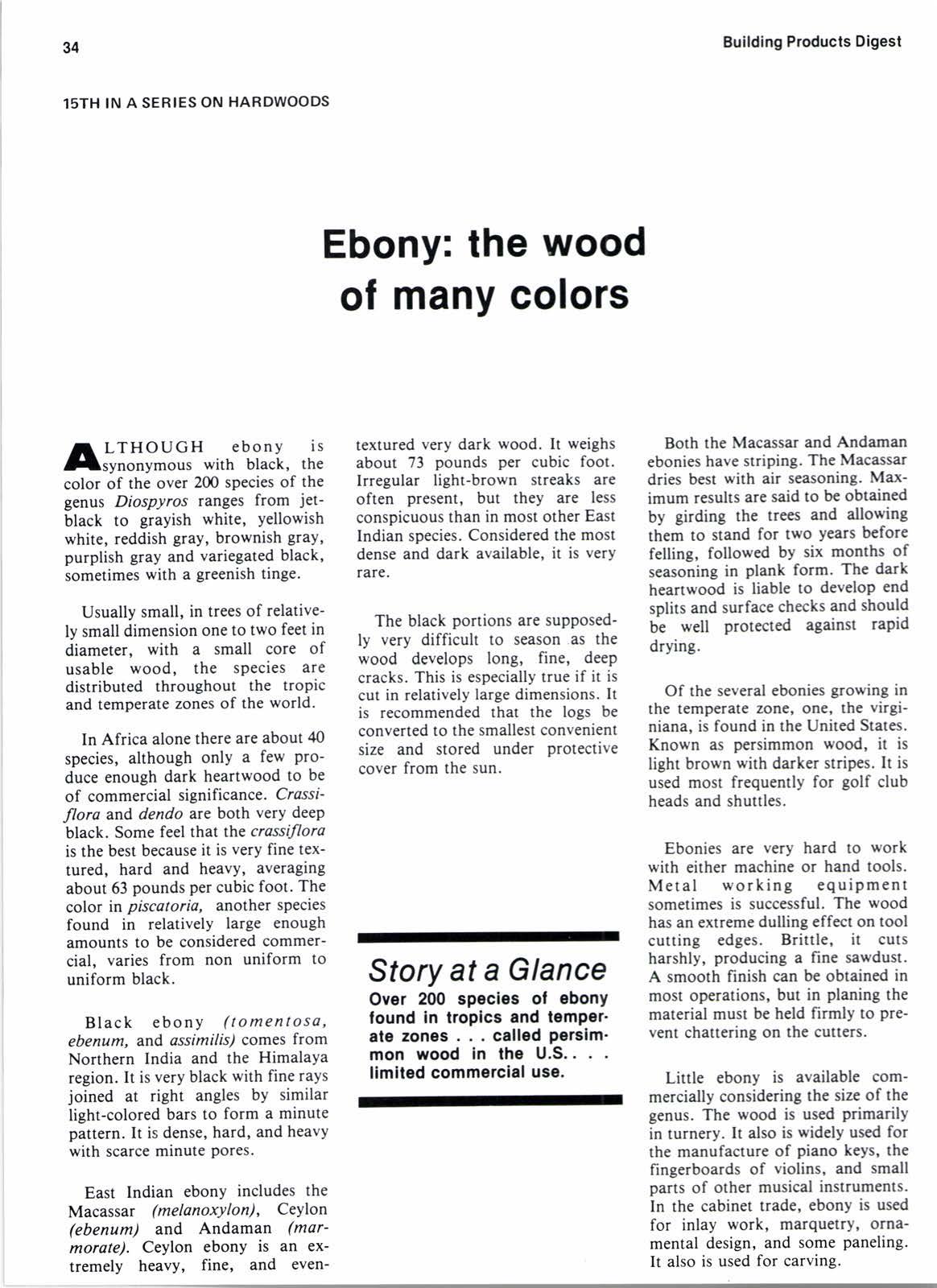
2 minute read
Ebony: the wood of many colors
fl LTHOUGH ebonv is Ilsynonymous with black, the color of the over 200 sPecies of the genus Diospy,'os ranges from jetblack to grayish white, Yellowish white, reddish gray, brownish graY, purplish gray and variegated black, sometimes with a greenish tinge'
Usually small, in trees of relatively small dimension one to two feet in diameter, with a small core of usable wood, the species are distributed throughout the tropic and temperate zones of the world.
In Africa alone there are about 40 species, although onlY a few Produce enough dark heartwood to be of commercial significance. Crassiflora and dendo are both verY deeP black. Some feel that the crassiflora is the best because it is very fine textured, hard and heavY, averaging about 63 pounds per cubic foot. The color in piscatoria, another species found in relatively large enough amounts to be considered commercial, varies from non uniform to uniform black.
Black ebony (tomentosa' ebenum, and assimilis) comes from Northern India and the HimalaYa region. It is very black with fine rays joined at right angles bY similar light-colored bars to form a minute pattern. It is dense, hard, and heavY with scarce minute pores.
East Indian ebonY includes the Macassar (melanoxYlon), CeYlon (ebenum) and Andaman (marmorate). Ceylon ebonY is an extremely heavy, fine, and even- textured very dark wood. It weighs about 73 pounds per cubic foot. Irregular light-brown streaks are often present, but they are less conspicuous than in most other East Indian species. Considered the most dense and dark available, it is very rare.
The black portions are supposedIy very difficult to season as the wood develops long, fine, deep cracks. This is especially true if it is cut in relatively large dimensions. It is recommended that the logs be converted to the smallest convenient size and stored under protective cover from the sun.
Both the Macassar and Andaman ebonies have striping. The Macassar dries best with air seasoning. Maximum results are said to be obtained by girding the trees and allowing them to stand for two Years before felling, followed bY six months of seasoning in Plank form. The dark heartwood is liable to develoP end splits and surface checks and should be well protectd against raPid drying.
Of the several ebonies growing in the temperate zone, one, the virginiana, is found in the United States. Known as persimmon wood, it is light brown with darker stripes. It is used most frequently for golf club heads and shuttles.
Sfory at a Glance
Over 200 spocaes of ebony found in troplcs and temPer' ate zones . called Persim' mon wood in the U.S.. . limited commercial use.
Ebonies are very hard to work with either machine or hand tools. Metal working equipment sometimes is successful. The wood has an extreme dulling effect on tool cutting edges. Brittle, it cuts harshly, producing a fine sawdust. A smooth finish can be obtained in most operations, but in Planing the material must be held firmly to prevent chattering on the cutters.
Little ebony is available commercially considering the size of the genus. The wood is used PrimarilY in turnery. It also is widely used for the manufacture of piano keys, the fingerboards of violins, and small parts of other musical instruments. In the cabinet trade, ebony is used for inlay work, marquetry, ornamental design, and some Paneling. It also is used for carving.










